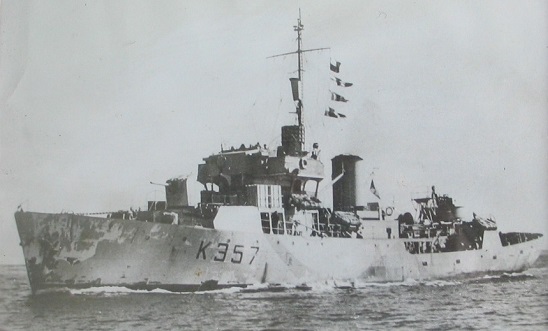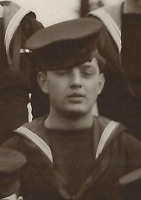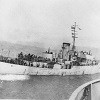|
HMCS RIVIERE DU LOUP K357
Flower Class Corvette
Built at Quebec City, she was commissioned there on 21 Nov 1943. She arrived at Halifax on 18 Dec1943 requiring a month's repairs. She carried out working-up exercises in Bermuda early in Feb 1943, returning on 18 Feb 1943 to complete the exercises in St. Margaret's Bay. Continuing mechanical problems necessitated further repairs, which continued at Halifax until early in Aug 1943. Having lost most of her original crew during this period, she had to return to Bermuda to work up again. Early in Sep 1944, RIVIERE DU LOUP returned to Halifax and joined EG W-3, WEF. In Oct 1944 she was assigned to EG C-3 and left St. John's on 13 Nov 1944 to pick up her first transatlantic convoy, HX.319. On arrival in the U.K., still dogged by troubles, she underwent a month's repairs at Belfast.
On 10 Jan 1945, forty-seven sailors on HMCS RIVIERE DU LOUP refused to turn to for duty.
The following is from the book "Mutiny and the Royal Canadian Navy" by Christopher M. Bell - "The most serious wartime mutiny, if judged by the punishments handed out, took place during the final year of the war in the corvette HMCS RIVIERE DU LOUP , also attached to the Western Approaches command. The ship had been an unhappy one for some time, and the executive officer was especially unpopular with the crew, who had little respect for his professional abilities. When the ship’s captain, Lieutenant R.N. Smillie, RCNVR, went into hospital to have an infected hand treated, men became alarmed by rumours that the first lieutenant would be taking the ship to sea the following day. On the morning of 10 January 1945, forty seven sailors refused to turn in for duty and instead locked themselves in the forward mess. Smillie rushed back to the ship but was unable to gain access to the mutineers. Rear-Admiral R.H.L. Bevan, the Flag-Officer-in-Charge, Northern Ireland, decided to wait matters out rather than attempt to force entry into the mess deck. The mutineers surrendered several hours later and were escorted ashore. They left behind a long list of complaints to justify their action. The most serious charge, that senior officers (and especially the first lieutenant) were incapable of properly handling the ship, was clearly what had triggered the mutiny. Other complaints, which undoubtedly contributed to the men’s general discontent, were presumably added to the list to bolster their case for mutiny. These included excessive drinking by officers, the use of foul language to address ratings, and other disrespectful behaviour. The subsequent board of enquiry blamed the incident primarily on ‘injudicious and tactless handling of the ratings by the Executive Officer’, and the crew’s concerns about his competence. Both the captain and the first lieutenant were relieved of their duties. Petty officers and leading seamen were reprimanded for failing ‘to notice trouble brewing’ and were drafted to other ships. Forty-four of the 47 mutineers were sentenced to terms of between 42 and 90 days in Belfast Gaol."
RIVIERE DU LOUP'S career as a mid-ocean escort ended with her arrival at Halifax late in May 1945, from convoy ON.304, and she was paid off on 02 Jul 1945 and placed in reserve at Sorel. In 1947 she was sold to the Dominican Navy and renamed Juan Bautista Maggiolo. She was broken up in 1972.
Photos and Documents Ship's company photos
Commanding Officers
They shall not be forgotten
Former Crew Members
Photos and Documents
|

















